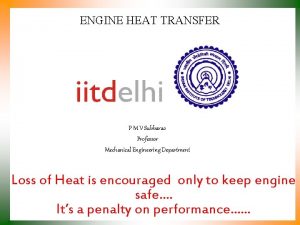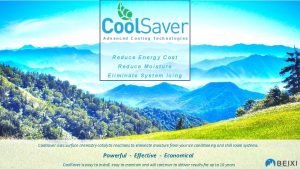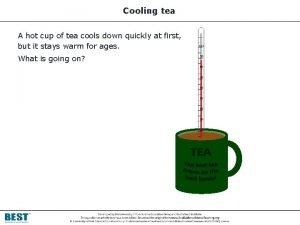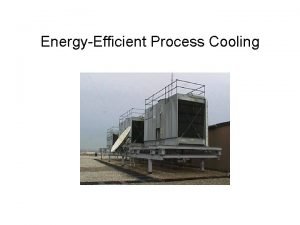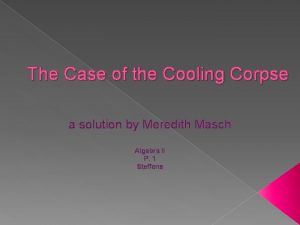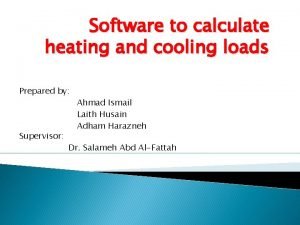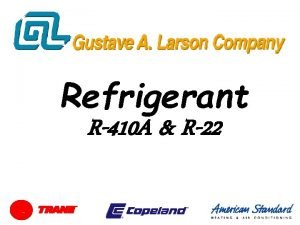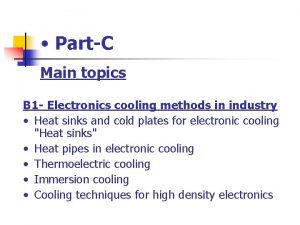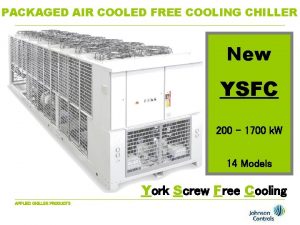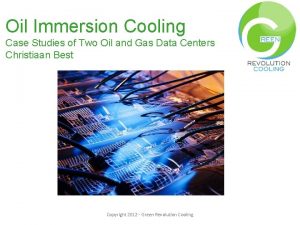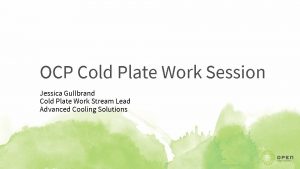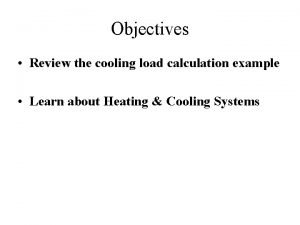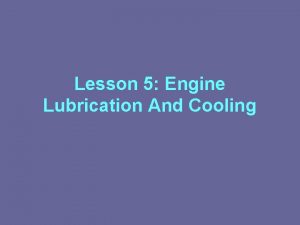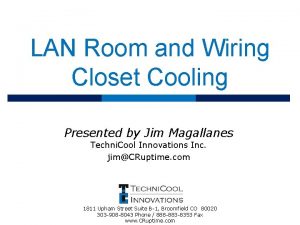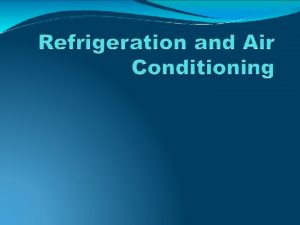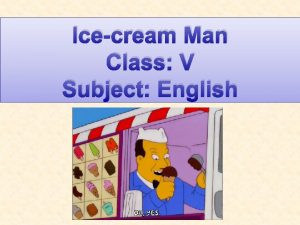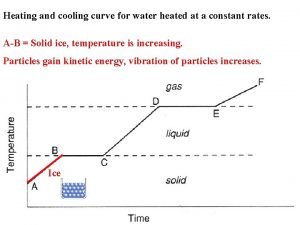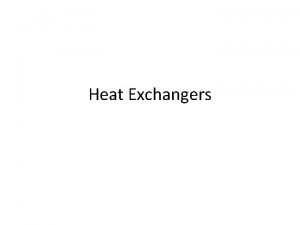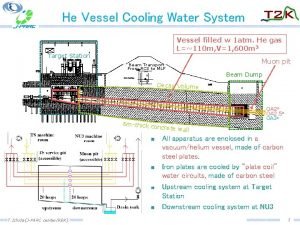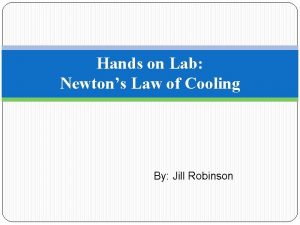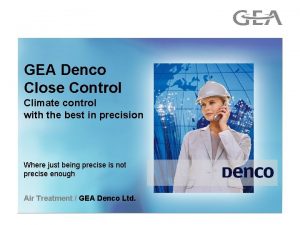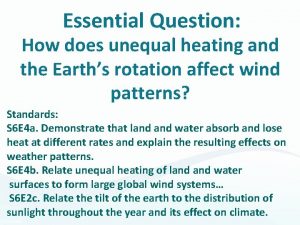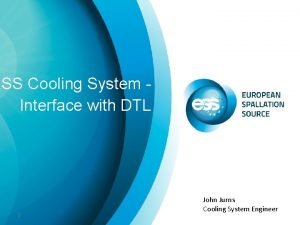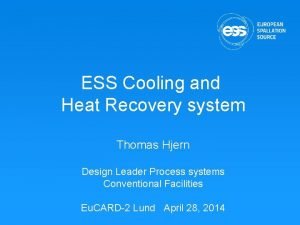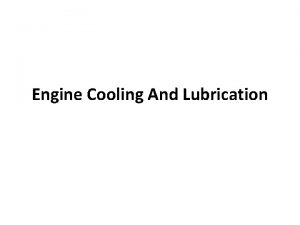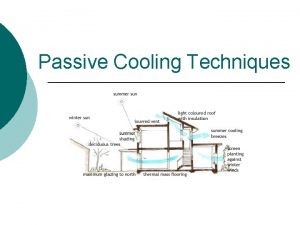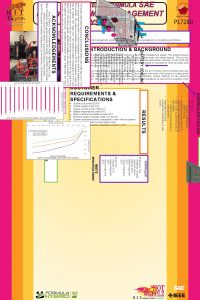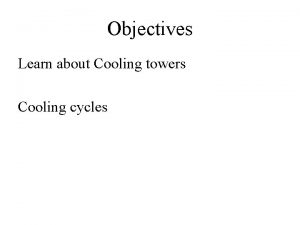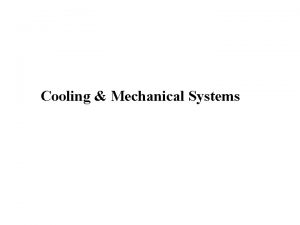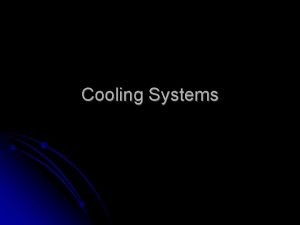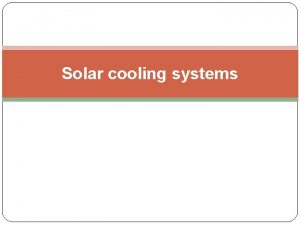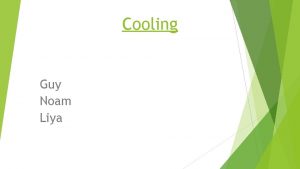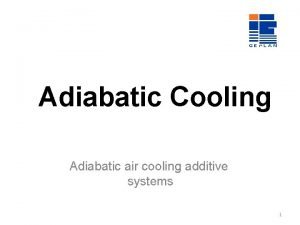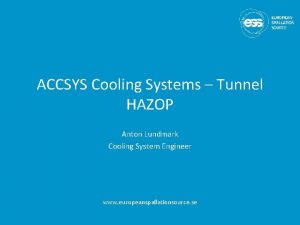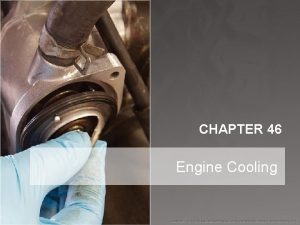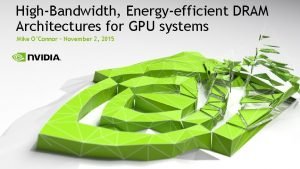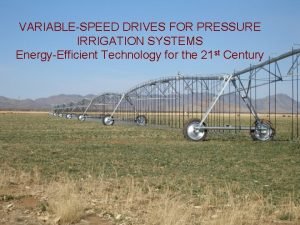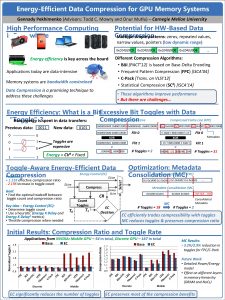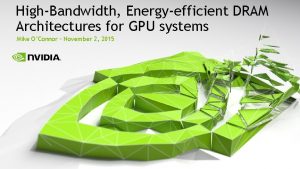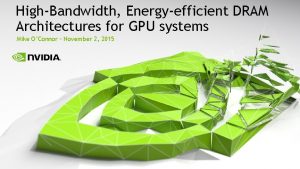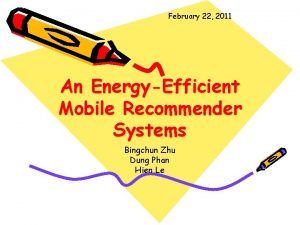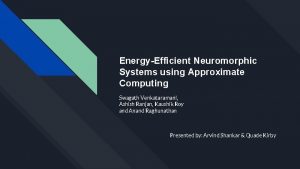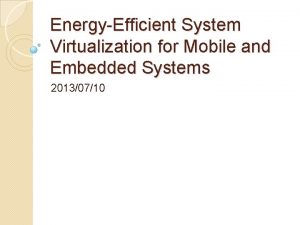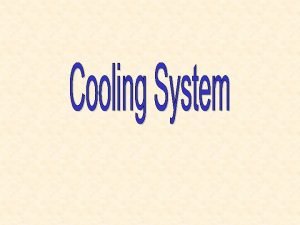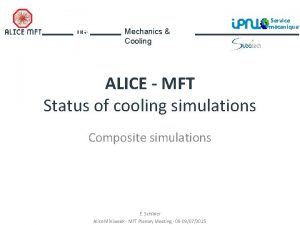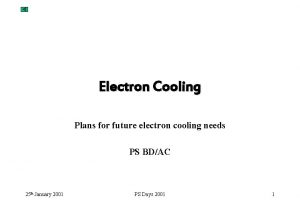EnergyEfficient Process Cooling Process Cooling Systems Cooling systems





























- Slides: 29

Energy-Efficient Process Cooling

Process Cooling Systems • Cooling systems – – – Cooling tower Water-cooled chiller Air-cooled chiller Absorption chiller Compressed air cooling • Cooling costs assume: – Electricity: – Natural gas: – Water: $0. 10 /k. Wh $10 /mm. Btu $6 /thousand gallons

Cooling Tower • 500 -ton tower delivers 7. 5 mm. Btu/hr • Ppump = 18 k. W Pfan = 20 k. W Water = 120 gal/mm. Btu • Unit cost of cooling = $1. 22 /mm. Btu

Chillers

Water-Cooled Chiller • E/Q = 0. 8 k. W/ton = 67 k. Wh/mm. Btu • Unit cost of cooling = $6. 70 /mm. Btu

Air-Cooled Chiller • E/Q = 1. 0 k. W/ton = 83 k. Wh/mm. Btu • Unit cost of cooling = $8. 30 /mm. Btu

Absorption Chiller • E/Q = 1 Btu-heat / Btu-cooling Eff-boiler = 80% • Unit cost of cooling = $12. 50 /mm. Btu

Open-Loop Water Cooling § DT = 10 F V = 12, 000 gallons / 1 mm. Btu § Unit cost of cooling = $72 /mm. Btu

Compressed Air Cooling • 150 scfm at 100 psig to produce 10, 200 Btu/hr cooling • 4. 5 scfm per hp • Unit cost of cooling = $272 /mm. Btu

Relative Process Cooling Costs Near order of magnitude difference in costs!

Cooling Energy Saving Opportunities • Reducing end use cooling loads and temperatures – Add insulation – Add heat exchangers – Improve heat transfer • Improving efficiency of distribution system – Reducing friction using large smooth pipes – Avoiding mixing – Employing variable-speed pumping • Improving efficiency of primary cooling units – Use cooling tower when possible – Use water-cooled rather than air-cooled chiller – Use variable speed chillers

End Use: Add Insulation • Insulation: – Reduces heat transfer into cooled tanks & piping – Decreases exterior condensation • Even at small temperature differences insulating cold surfaces is generally cost effective

End Use: Continuous Process with Sequential Heating and Cooling Current: Qh 1 = 100 Qc 1 = 100 With HX: If Qhx = 30, Qh 2 = 70 Qc 2 = 30 HX reduces both heating and cooling loads!

End Use: Batch Processes with Discrete Heating and Cooling Cost effective to transfer heat between processes, whenever the processes that need cooling are 10 F higher than the process that need heating

End Use: Batch Processes with Discrete Heating and Cooling Add Heat Exchangers T = 145 F Requires Cooling T = 120 F Requires Heating

End Use: Optimize Heat Exchanger Network (Pinch Analysis) For multiple heating and cooling opportunities, optimize heat exchanger network using Pinch Analysis.

End Use: Improve Heat Transfer Cross flow cooling of extruded plastic with 50 F chilled water from chiller

End Use: Improve Heat Transfer Counter flow e = 0. 78 Cross flow e = 0. 62 NTU = 3 and Cmin/Cmax = 1 Parallel flow e = 0. 50

Cooling Product: Cross vs Counter Flow Cross Flow: e = 0. 69 • Tw 1 = 50 F • Tp = 300 F • Mcpmin = 83. 2 Btu/min-F • • Q = e mcpmin (Tp – Tw 1) = 0. 69 83. 2 (300 – 50) Q = 14, 352 Btu/min Counter Flow: e = 0. 78 • Q = 14, 352 Btu/min • Tp = 300 F • Mcpmin = 83. 2 Btu/min-F • • Q = e mcpmin (Tp – Tw 1) = 14, 352 Btu/min = 0. 78 83. 2 (300 – Tw 1) Tw 1 = 79 F

Cooling Product: Cross vs Counter Flow Cooling towers can deliver 79 F water much of the year using 1/10 as much energy as chillers!

Distribution System: Avoid Mixing Separate hot and cold water tanks Lower temperature, less pumping energy to process Higher temperature, less fan energy to cooling tower

Primary Cooling: Match Cooling Source to End Use

Primary Cooling: Use Cooling Tower When Possible Cooling towers can deliver water at about outside air temperature

Primary Cooling: Use Cooling Tower When Possible Model cooling tower performance Cool. Sim reports number hours CT delivers target temperature.

Primary Cooling: Use Water Cooled Chillers for Year Round Loads E/Q (Air-cooled) = 1. 0 k. W/ton E/Q (Water-cooled) = 0. 8

Primary Cooling: Stage Multiple Constant Speed Chillers

Primary Cooling: Use Variable-Speed Chiller

Ammonia Refrigeration Systems Multiple compressors, stages, evaporative condensers

Ammonia Refrigeration Savings Opportunities • Reclaim heat • Variable head-pressure control
 Ebullient cooling systems
Ebullient cooling systems Advanced cooling systems inc
Advanced cooling systems inc The act of cooling tea
The act of cooling tea Energy process cooling
Energy process cooling Decision support systems and intelligent systems
Decision support systems and intelligent systems Dicapine
Dicapine Embedded systems vs cyber physical systems
Embedded systems vs cyber physical systems Elegant systems
Elegant systems Cooling corpse math problem
Cooling corpse math problem Market practice definition
Market practice definition Cooling load software
Cooling load software Superheat formula
Superheat formula Electronic cooling methods
Electronic cooling methods Free cooling
Free cooling Oil immersion cooling
Oil immersion cooling Ocp liquid cooling
Ocp liquid cooling Cooling load calculation example
Cooling load calculation example Lubrication and cooling system
Lubrication and cooling system It closet cooling
It closet cooling Introduction of refrigeration system
Introduction of refrigeration system Mounds of cooling brown and white
Mounds of cooling brown and white Latent heat of fusion
Latent heat of fusion Tubular heat exchanger
Tubular heat exchanger Adsorb
Adsorb Newton's law of cooling differential equation
Newton's law of cooling differential equation Gea denco
Gea denco Sea breeze
Sea breeze Ess cooling
Ess cooling Ess cooling
Ess cooling Lubrication and cooling system
Lubrication and cooling system
